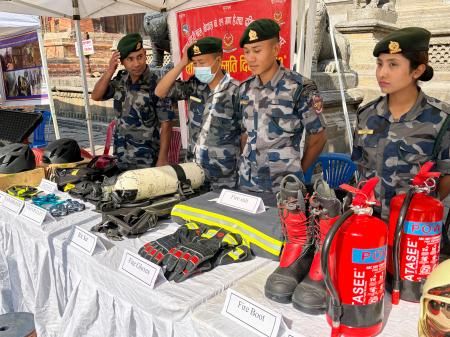Remembering Nepal's Earthquake: A Decade Later – Resilience, Reconstruction, and the Road Ahead
Ten years ago, on April 25th, 2013, a devastating earthquake struck Nepal, leaving an indelible mark on the nation. The 7.8 magnitude quake, followed by a powerful aftershock, claimed thousands of lives, displaced millions, and caused widespread destruction, particularly in Kathmandu and surrounding areas. This article reflects on the impact of this catastrophic event, the progress made in the decade since, and the ongoing challenges Nepal faces.
The Scars Remain: Remembering the Devastation
The 2013 Nepal earthquake was a defining moment in the country's history. Images of collapsed buildings, shattered lives, and desperate pleas for help resonated globally. The earthquake's impact extended far beyond the immediate loss of life:
- Widespread destruction of infrastructure: Ancient temples, historical sites, and vital infrastructure like roads and hospitals were reduced to rubble. The damage to housing left millions homeless.
- Economic devastation: The earthquake dealt a crippling blow to Nepal's already fragile economy, disrupting tourism, agriculture, and trade. Reconstruction efforts strained national resources.
- Humanitarian crisis: The sheer scale of destruction triggered a massive humanitarian crisis, requiring international aid and assistance on an unprecedented scale.
Beyond the Numbers: Personal Stories of Loss and Resilience
While statistics paint a grim picture, the true impact of the earthquake lies in the individual stories of loss, grief, and remarkable resilience. Countless families lost loved ones, their homes, and their livelihoods. Yet, amidst the despair, the Nepalese people demonstrated an unwavering spirit, rebuilding their lives and communities with incredible tenacity. [Link to a relevant news story or documentary showcasing personal accounts].
A Decade of Reconstruction: Progress and Persistent Challenges
The years following the earthquake have witnessed significant efforts towards reconstruction and recovery. International aid, coupled with the tireless efforts of the Nepalese government and NGOs, has led to:
- Improved building codes and construction techniques: New building regulations aim to enhance the seismic resilience of structures, minimizing future damage.
- Infrastructure development: Significant progress has been made in rebuilding roads, schools, and hospitals, although challenges remain in remote areas.
- Economic recovery: While the economy has shown signs of recovery, the earthquake's long-term economic impact continues to be felt.
The Ongoing Struggle: Addressing Lingering Issues
Despite the progress made, Nepal still faces significant hurdles:
- Access to safe housing: Many people remain displaced or live in substandard housing, vulnerable to future disasters.
- Economic inequality: The earthquake exacerbated existing economic disparities, leaving marginalized communities particularly vulnerable.
- Disaster preparedness: While progress has been made, Nepal continues to invest in improving its disaster preparedness and response mechanisms.
Looking Ahead: Lessons Learned and Future Preparedness
The 2013 Nepal earthquake serves as a stark reminder of the devastating power of natural disasters. The experience has highlighted the importance of:
- Robust building codes and enforcement: Ensuring compliance with seismic safety standards is crucial for minimizing future losses.
- Effective disaster preparedness planning: Investing in early warning systems, emergency response protocols, and community-based disaster risk reduction measures is paramount.
- International cooperation: Strengthening international partnerships for disaster relief and long-term recovery is essential.
The road to full recovery remains long, but the resilience of the Nepalese people and the lessons learned from this tragedy provide hope for a more resilient and prepared future. [Link to a relevant NGO or government website focusing on Nepal's earthquake recovery]. Remembering the earthquake is not just about commemorating the loss but also about learning from the past to build a better, safer future for Nepal.
